An easy guide on how set up your operating system so you can program in
Python, and how to update or uninstall it. For Linux, Windows, and
macOS.
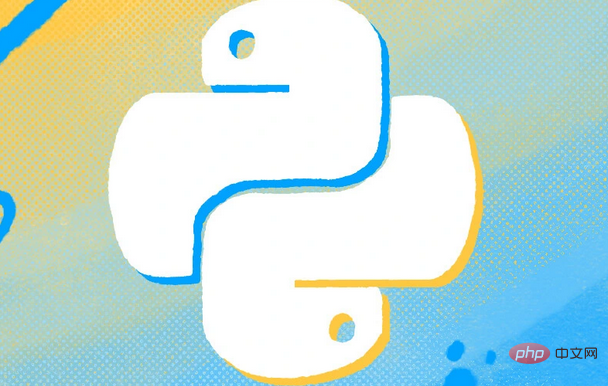
Whether it’s your first time programming or you’re a seasoned
programmer, you’ll have to install or update Python every now and then
--- or if necessary, uninstall it. In this article, you'll learn how to
do just that.
Some systems come with Python, so to start off, we’ll first check to
see if it’s installed on your system before we proceed. To do that,
we’ll need to open a terminal. Since you might be new to programming,
let’s go over how to open a terminal for Linux, Windows, and macOS.
Table of contents
- Terminals: where and how to run a python script
- How do I set up my system for programming in Python?
- How do I install Python on my operating system?
- What about Python IDEs?
- Running your first script in a terminal
- How do I update Python on my operating system?
Terminals: where and how to run a python script
Before we dive into setting up your system so you can program in Python, let’s talk terminal basics and benefits.
What’s a terminal?
As a user, you’re familiar with clicking on your screen to control
your computer (this is called using a graphical user interface, or GUI).
A terminal, also known as a command line or console, is a different way
to control the computer. Instead of clicking, we enter text commands to
give the computer instructions.
What are the benefits of using a terminal?
You might wonder why we need a terminal since clicking a mouse seems a
lot more convenient than typing commands—especially when you don’t yet
know which commands to type. But there are quite a few benefits to using
a terminal, including quick access to all available commands and easier
task automation.
However, let’s focus on why we need it for working with Python. We use a terminal, or command line, to:
- Install, update, and delete Python on some systems
- Run Python files
- Add Python libraries
- Check the Python version
How does a terminal work?
When you open the terminal, it waits for you to type a command, and
then the shell executes it. The shell is a special program that turns
the command into actions for the computer’s operating system. You’ll get
the result or feedback from the command in the terminal.
Don’t worry about the commands. Once you manage to open the terminal, I’ll tell you which commands to use.
How do I set up my system for programming in Python?
Now let’s dive into the steps you can follow to set up your system to
program in Python. First, we’ll open a terminal. Here’s how to open a
terminal in Linux, Windows, and macOS.
How to open a terminal in Linux
There are different ways to open a terminal depending on your Linux distributions:
- Press Ctrl Alt T
- Access the application menu or launcher, which might be called Activities, Show Applications, or something similar
- Search for Terminal and click the Terminal icon
How to open a terminal in Windows
There are two different built-in options for terminals in Windows. You can open the command prompt or PowerShell:
- Press the Windows button R, type “cmd” in the Run dialog, and press Enter
- Search
for “cmd” or “PowerShell” in the Start bar and press Enter. If you
don’t have a search box in the Start bar, click on the Windows icon
first and type there.
How to open a terminal in macOS
On macOS, the Terminal app provides access to the Unix part of the OS. Here are two options to open it:
- Use Spotlight search: Press cmd Space to bring up the Spotlight search box, type “Terminal,” and press Enter.
- Use the Finder window: Navigate to Applications > Utilities and click on Terminal
Check if Python is installed by checking the Python version
Now that we have the terminal open, we can check if Python is
installed. In your terminal or command prompt, type the following
command:
python --version
Copy after login
Or, for some systems, you might need:
python3 --version
Copy after login
Copy after login
Or for Windows:
py --version
Copy after login
This command will return the version number like the example below if Python is installed.

If Python isn’t installed, you'll see an error message saying Python
is unknown or isn't installed, recognized, or added to your system's
PATH.
Depending on the outcome, you might be done. If you check the version
and it has the version number you want, you’re ready to go.
Let’s make sure you know how to pick the correct Python version.
How to choose the right Python version
Unfortunately, I can’t tell you which version you’ll need. The version depends on what you need to do.
The two major versions of Python are 2 and 3. But versions can look a
little different. For example, the latest version at the time of this
article is 3.12.3. As you can see, the version number is a lot longer
than just the number 3. But since it starts with 3, I'm talking about
Python 3.
Let’s start with a very common use case for people installing Python:
starting a new project. If you want to start a new project, grab the
latest version of Python 3.
But what about Python 2?
Good question. If you’re working on an existing project, the Python
versions should be the same. For example, you’ll need version 2 when
working on an existing project that uses Python 2. (We typically call
Python 2 “legacy.”) Most projects will be Python 3. If you need to work
on an existing project that uses a specific version of Python 3, you can
use the latest version of Python 3 on your computer.
But—and this is an important but—if you work on an existing project
that’s on version 3 but a lower version of Python 3 on the server, it
might not support all the newest Python features. To ensure
compatibility, choose the specific version of 3 the project is on.
Here’s a good rule of thumb: use the latest version unless you have project requirements that need an older one.
How do I install Python on my operating system?
Now that you know which version you’ll need, let’s install it. Jump
to the section that applies to your operating system (Linux, Windows, or
macOS).
How to install Python on Linux
Most Linux distributions come with Python pre-installed. If you need
to install Python 3, you can use the package manager for your Linux
distribution. Here’s what you can use for Ubuntu and other Debian-based
systems:
First, type:
sudo apt update
Copy after login
And then type:
sudo apt install python3
Copy after login
How to install Python on Windows
We’ll need to download Python first to install it on Windows. You can get the Python installer from the official Python website. Scroll down to the version you need.
After downloading it, you’ll need to run the installer, which you can find in your Downloads folder.
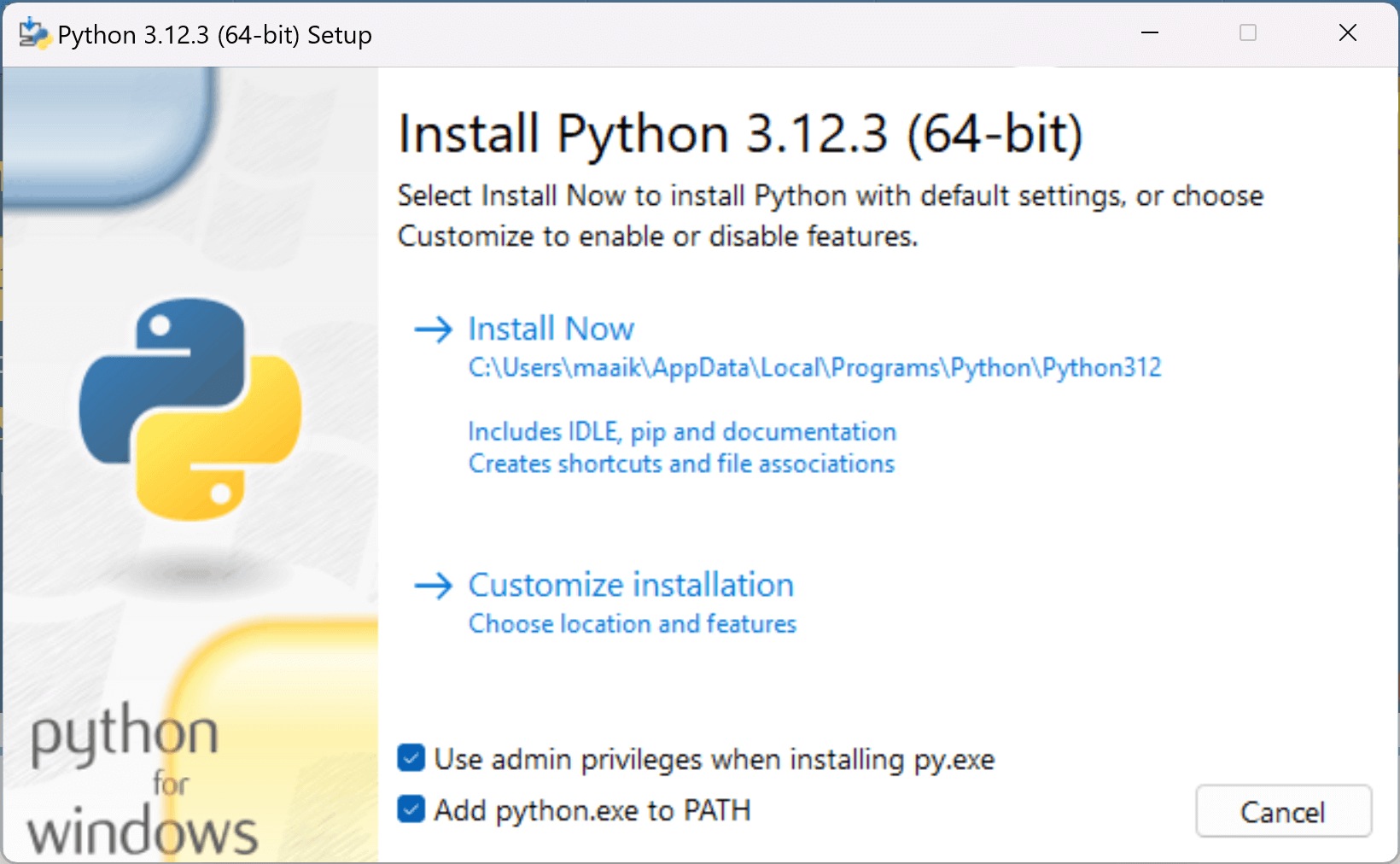
Make sure to check the box that says “Add python.exe to PATH” to make Python accessible from the command line.
After that, click Install Now and follow the installer prompts to complete the installation.
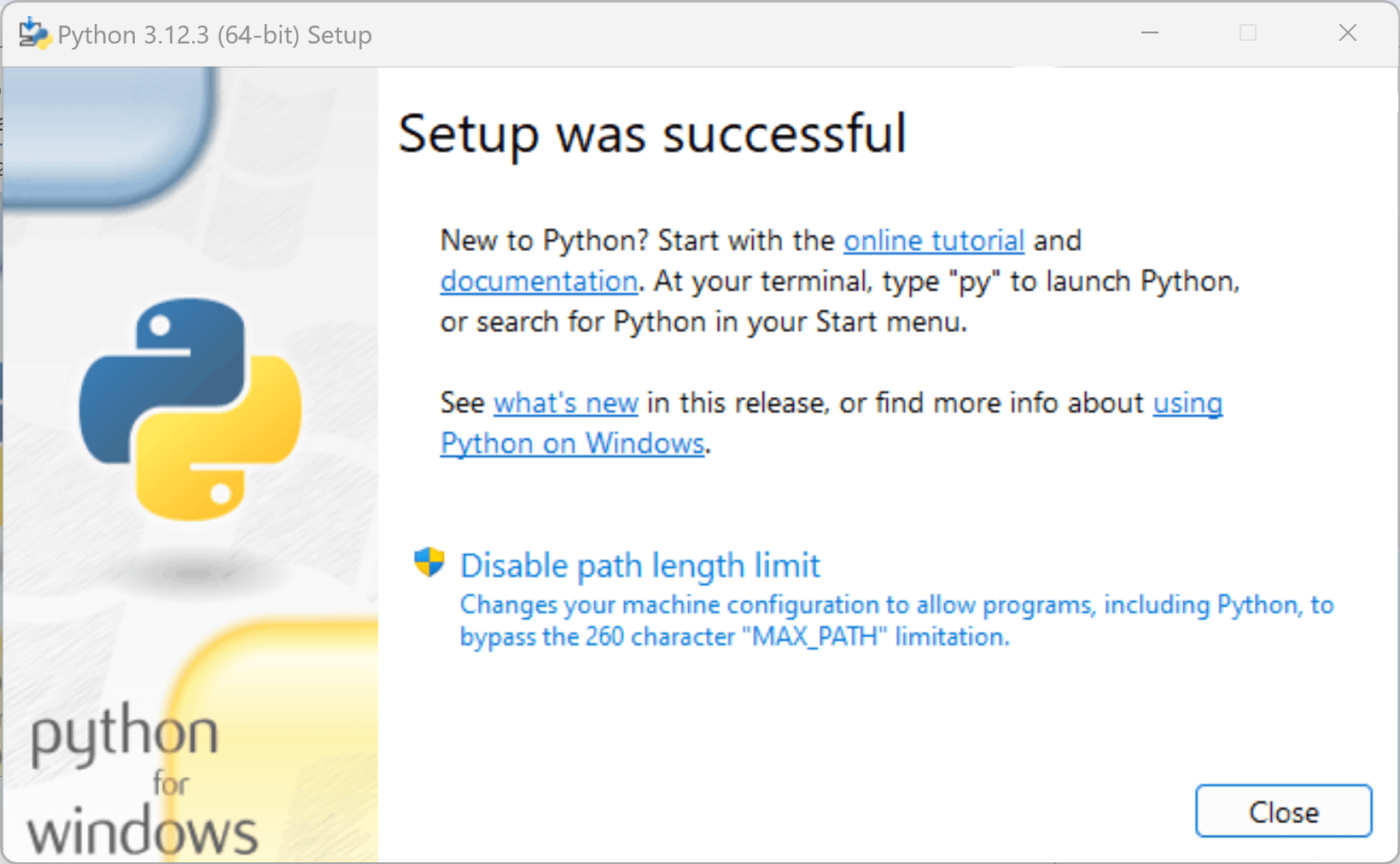
How to install Python on macOS
Like Linux, your macOS probably has a version of Python because the
system comes with Python 2 installed by default. However, it’s likely
you’ll need to install Python 3. Here’s the easiest way to do it.
If you’re not using Homebrew yet, let’s install it. (You can thank me
later.) Homebrew is a package manager for macOS that allows you to use
simple commands in the terminal to install, upgrade, and uninstall all
sorts of applications. Fun fact: Being able to write Python is an
application in itself.
Here’s how to install Homebrew. Head to the Homebrew website and copy-paste the command into your terminal. This is what the command currently looks like:
/bin/bash -c "$(curl -fsSL https://raw.githubusercontent.com/Homebrew/install/HEAD/install.sh)"
Copy after login
Once you’ve installed Homebrew, you can easily install Python by running:
brew install python
Copy after login
This command installs Python 3 and Pip3. Pip3 is the Python package installer you’ll need when using Python.
Verify the Python installation
After installing Python, we can check to see if we installed it
correctly. Close the terminal you opened and open a new one. Then check
the version again by typing in the version-checking command from earlier
in this guide.
You should see the Python version number you installed if the installation was successful.
What about Python IDEs?
You can use the most basic text editor, like Notepad on Windows, to
write Python code. However, it’s likely you’ll benefit from a slightly
fancier application.
An integrated development environment (IDE) is an application that
can make your coding experience a lot smoother. It includes features
like syntax highlighting, code completion, and built-in debugging and
running tools. The three most popular IDEs for Python are:
- PyCharm by JetBrains
- Visual Studio Code (VS Code)
- Jupyter Notebook (commonly used for data analysis)
I use all three but for different purposes. I’ll go for PyCharm when I
want to develop applications such as APIs or apps with a GUI. I prefer
VS Code when I want to use Python for automation tasks. And Jupyter
Notebook is my preferred option for statistical and data purposes.
Running your first script in a terminal
For this example, I’ll use VS code to create a file with a .py extension.
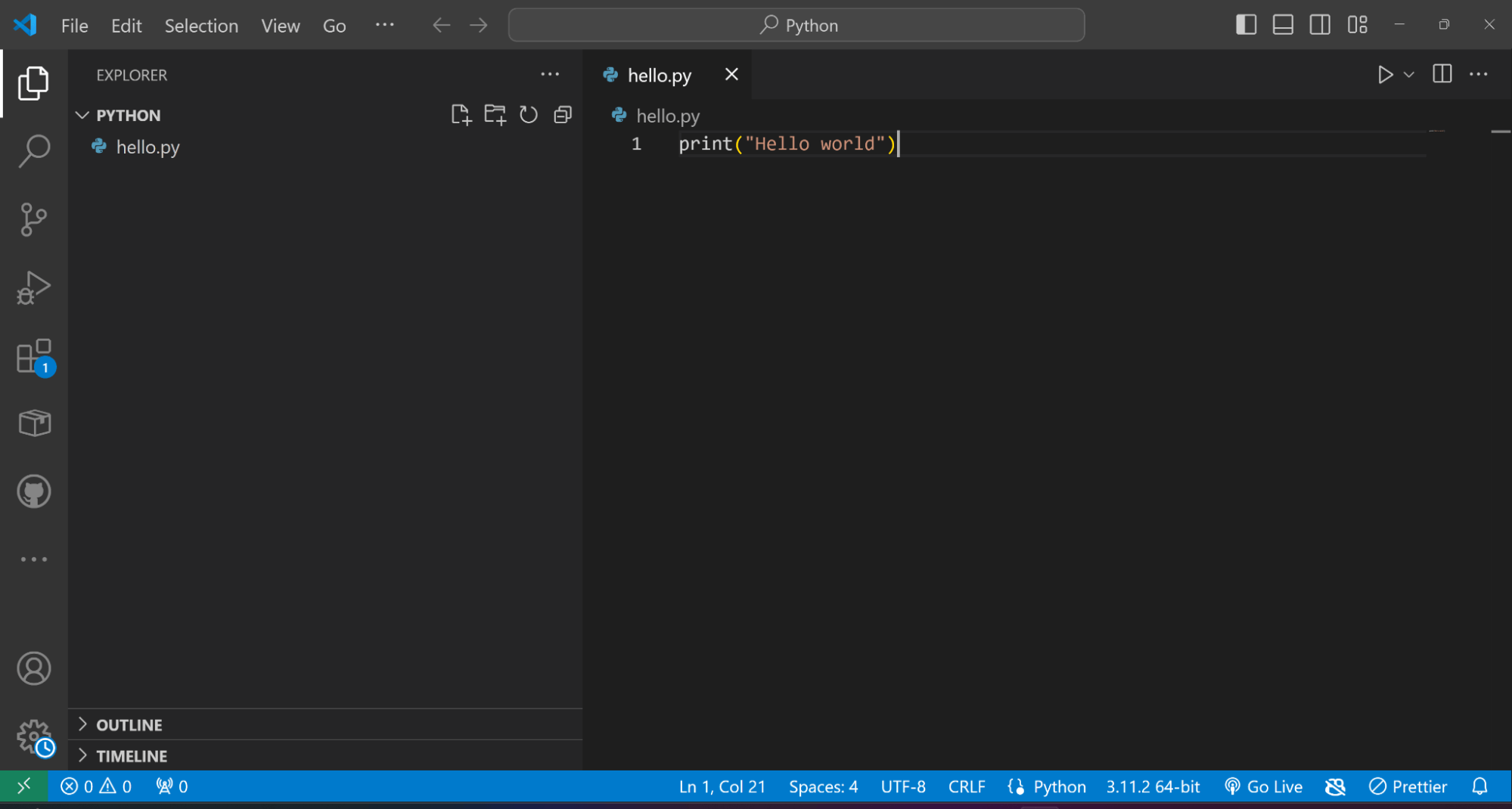
I’ve called my file hello.py and gave it the content:
print("Hello world")Copy after login
There are different ways to run your code from VS Code. You can see
mine shows the play icon (▷) in the right upper corner due to an
extension I have called Code Runner. I want to show a more universal way
of running this code.
We need to open the folder with the hello.py file in the terminal.
There are different ways to do it, but the easiest is to right click in
the folder and choose an option such as Open with Terminal.
It looks like this on Windows:
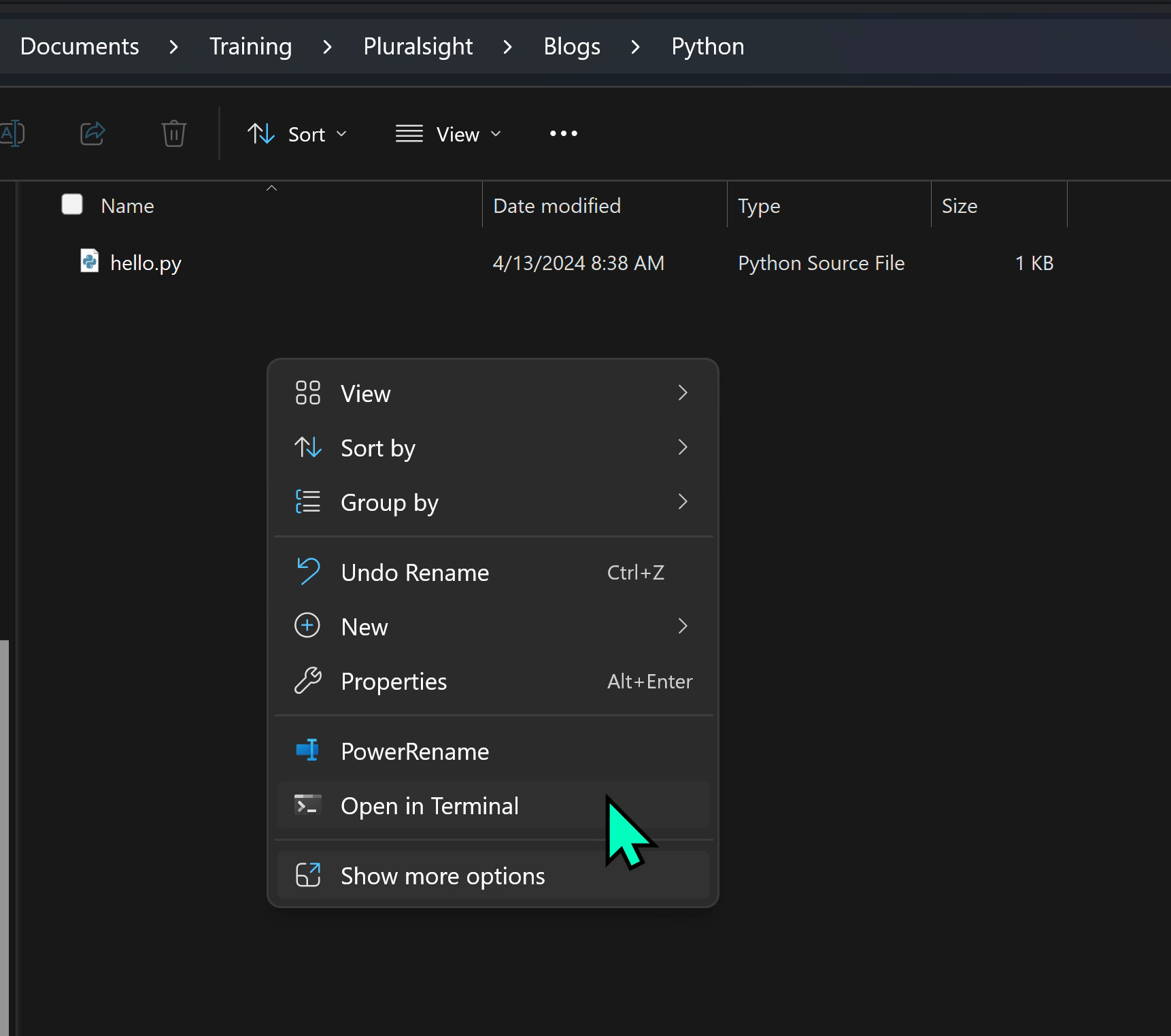
In the terminal that pops up, type “python” or “python3” or
“py”—whichever gave you the successful version—followed by the name of
the file, including the extension. Press Enter. It should show you the
“Hello world” message in the terminal.
This is what the little program did while executing it:
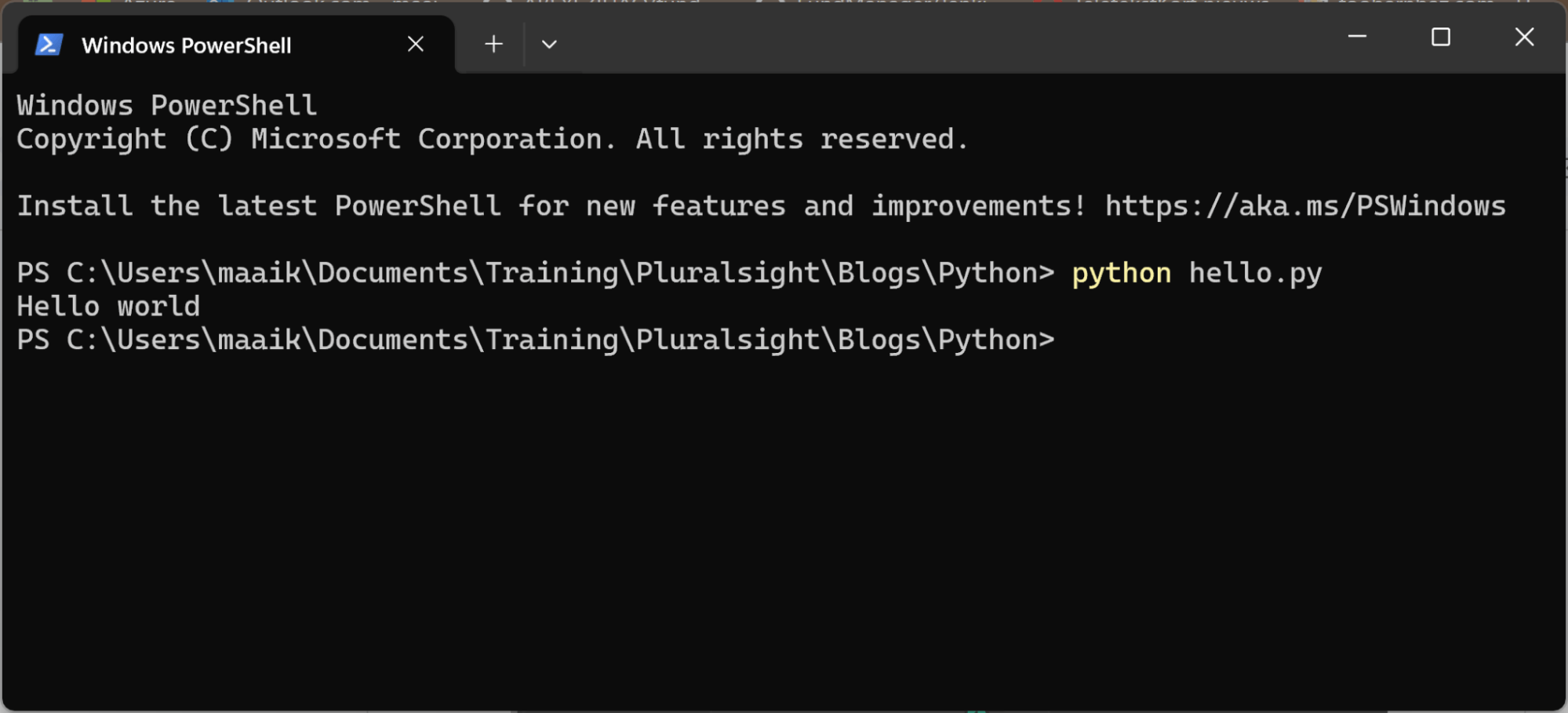
How do I update Python on my operating system?
You’ll want to make sure you’re running the latest version of Python
on your system. Here’s how to update Python for Linux, Windows, and
macOS.
How to update Python on Linux and macOS
To update Python on Linux and macOS, simply download the latest
version from the official Python website and run the installer. It will
replace the older version with the newer one.
How to update Python on Windows
To update Python on Windows you download the latest version and run
the installer. It will add the version as opposed to replacing it, and
you can select which version to choose with the version flag. For
example:
py --3.11 --version
Copy after login
or
py --3.11 hello.py
Copy after login
This will run using the specified version of Python. If you don’t
specify the version, it will grab the one that’s on the PATH. Which
typically is the latest one.

How do I uninstall Python from my operating system?
Now that we know how to update Python on Linux, Windows, and macOS,
let’s see how to uninstall it. And of course, the process to uninstall
Python varies by operating system.
How to uninstall Python on Linux
Uninstalling Python from a Linux system varies slightly depending on
the distribution and how Python was installed. We’re going to use the
package manager apt for Debian-based systems.
Note: Many Linux distributions rely on Python for system
operations and various software tools. Uninstalling the default system
Python could cause system stability issues—and we don’t want that.
First, make sure Python is installed. Go ahead and open a terminal and type:
python3 --version
Copy after login
Copy after login
This command will display the version of Python 3 if it's installed.
If it is, we can go ahead and uninstall Python with the apt-get command:
sudo apt-get remove python3
Copy after login
If you have multiple versions installed, and you want to uninstall a
specific version, you can replace “python3” with the specific version
(e.g., “python3.9”).
You can also remove files and dependencies you don’t need anymore
after uninstalling. You can do that by entering the following two
commands in the terminal:
sudo apt-get autoremove
sudo apt-get autoclean
Copy after login
These remove packages automatically installed to satisfy dependencies for Python that are no longer needed.
How to uninstall Python on Windows
You have a couple options to uninstall Python on Windows. First, you
can uninstall Python via the Add or Remove Programs feature (search for
it in the search box).
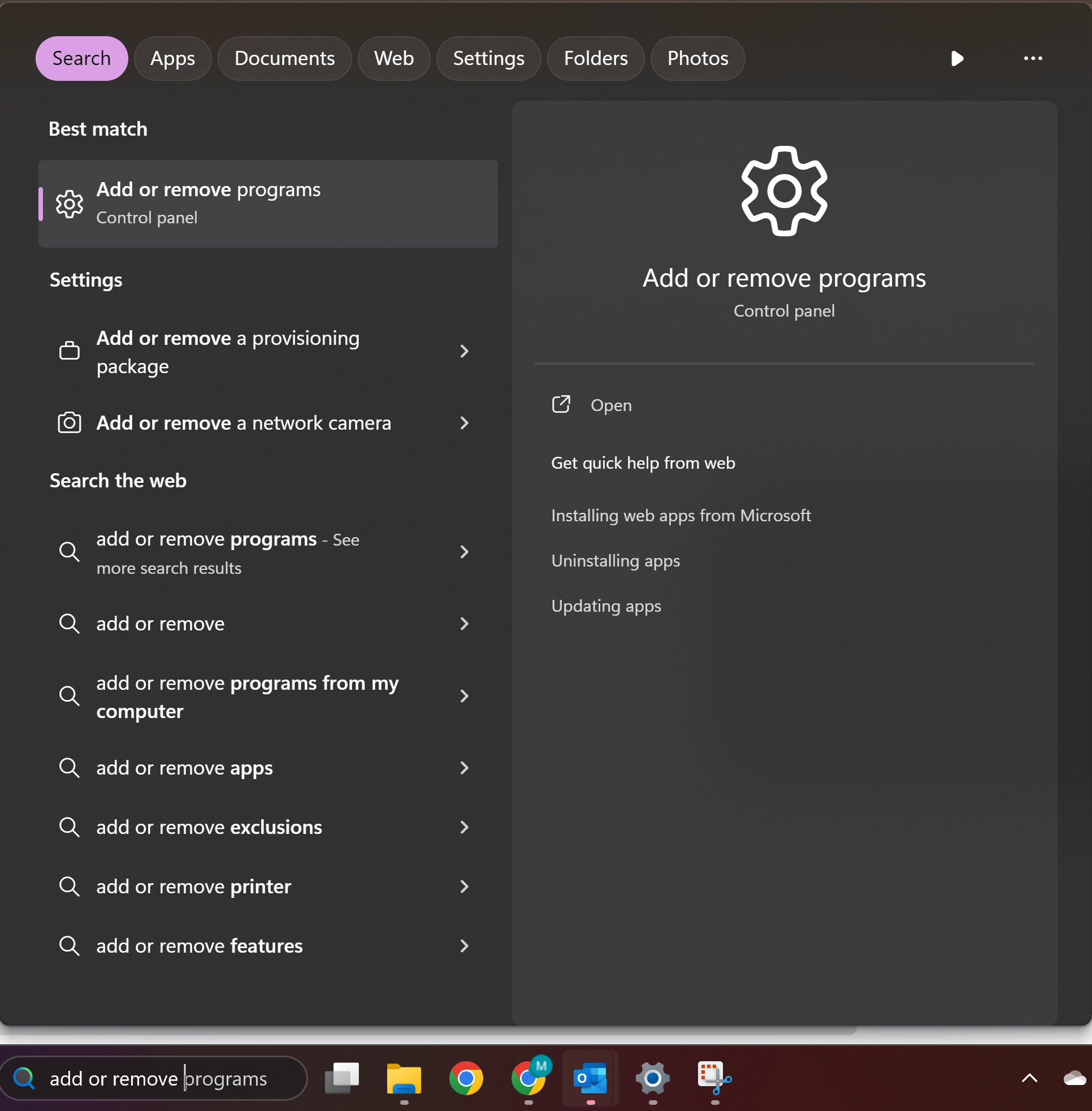
Search for Python, click on the three dots next to the version you want to uninstall, and choose Uninstall.
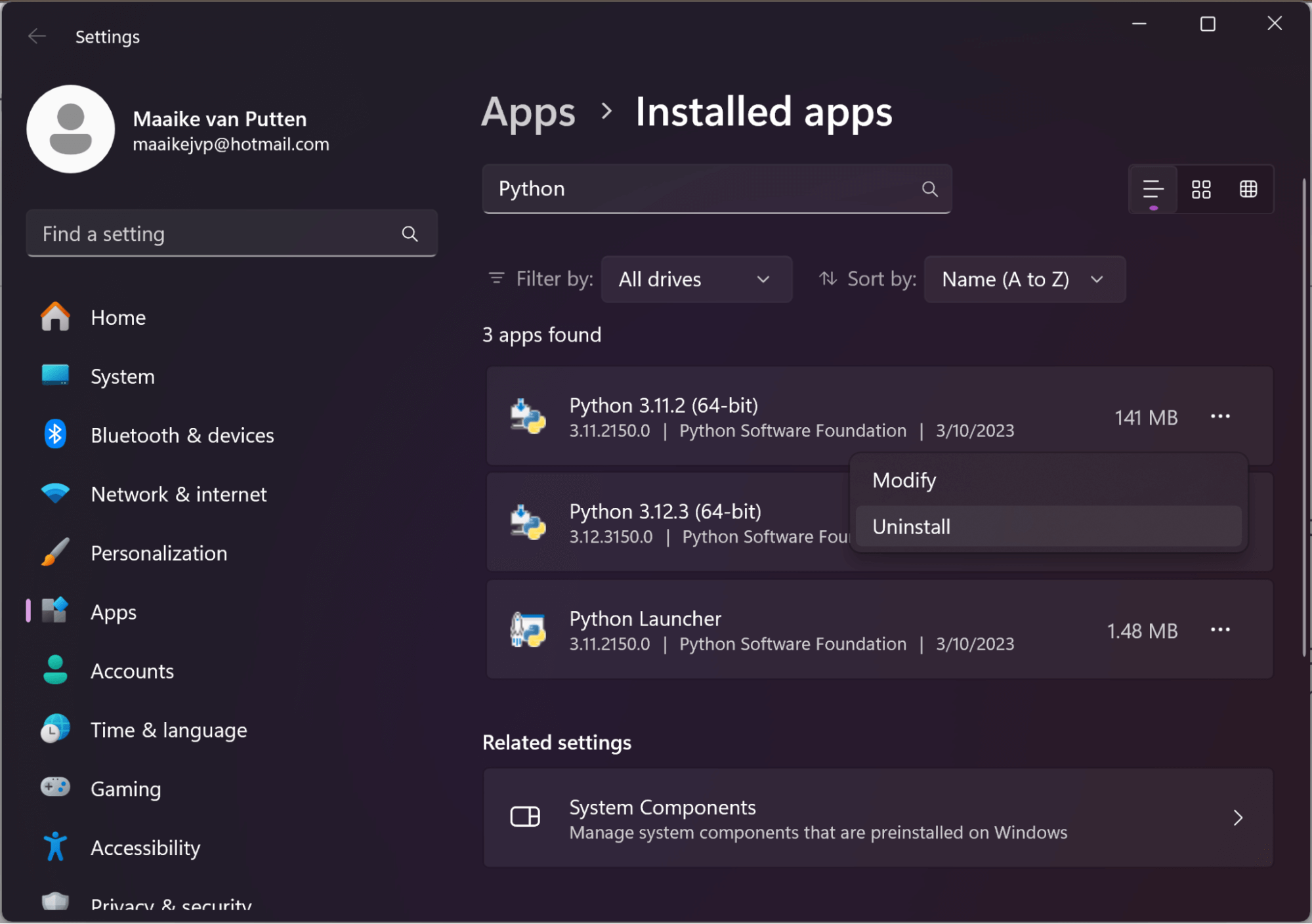
Confirm this option in the pop-up box by clicking Uninstall. Python
will then start uninstalling. Windows confirms the successful uninstall
when it’s done.
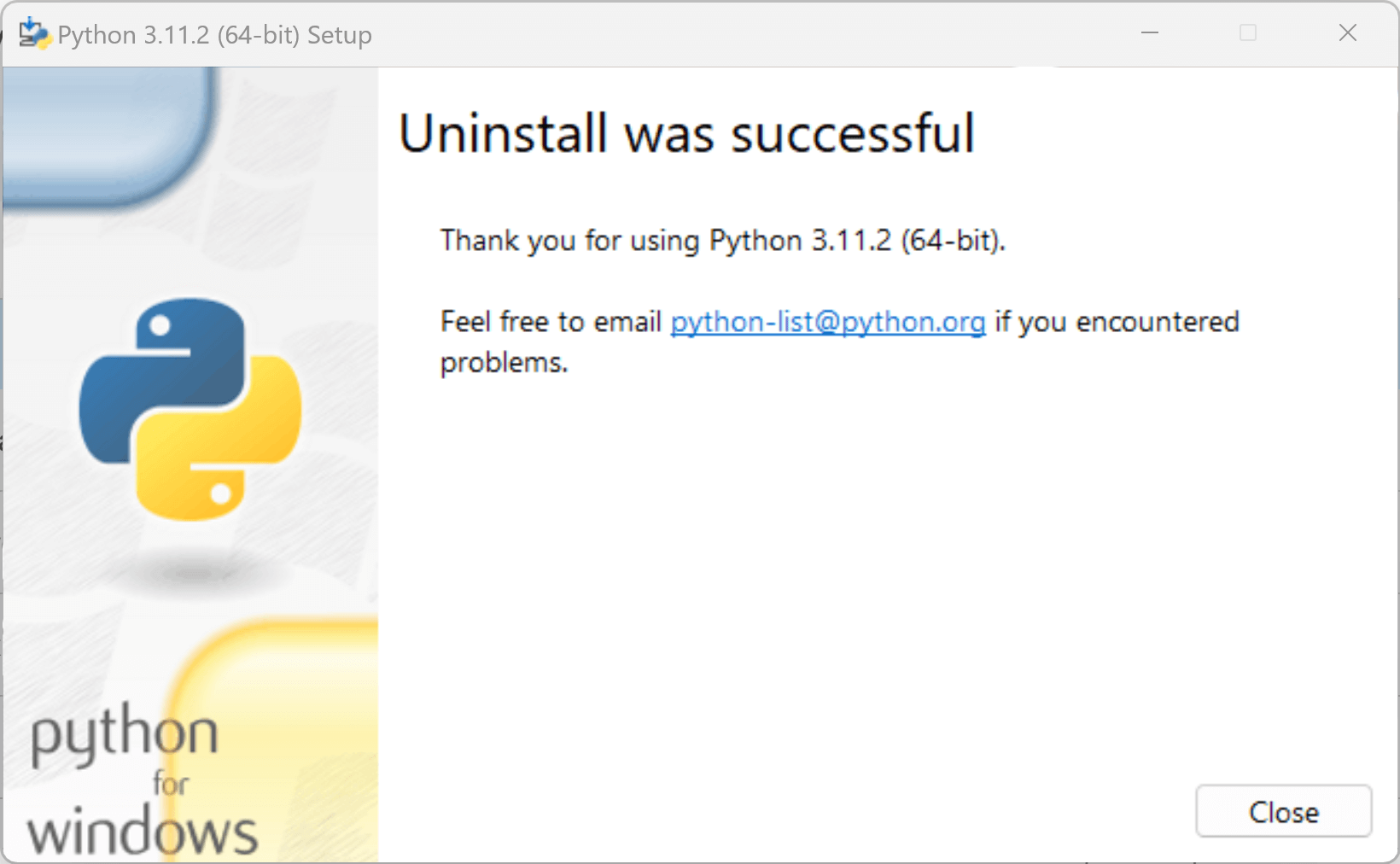
Dan ledakan, ia telah hilang!
Anda juga boleh pergi ke Panel Kawalan > Program dan pilih “Nyahpasang atur cara.”
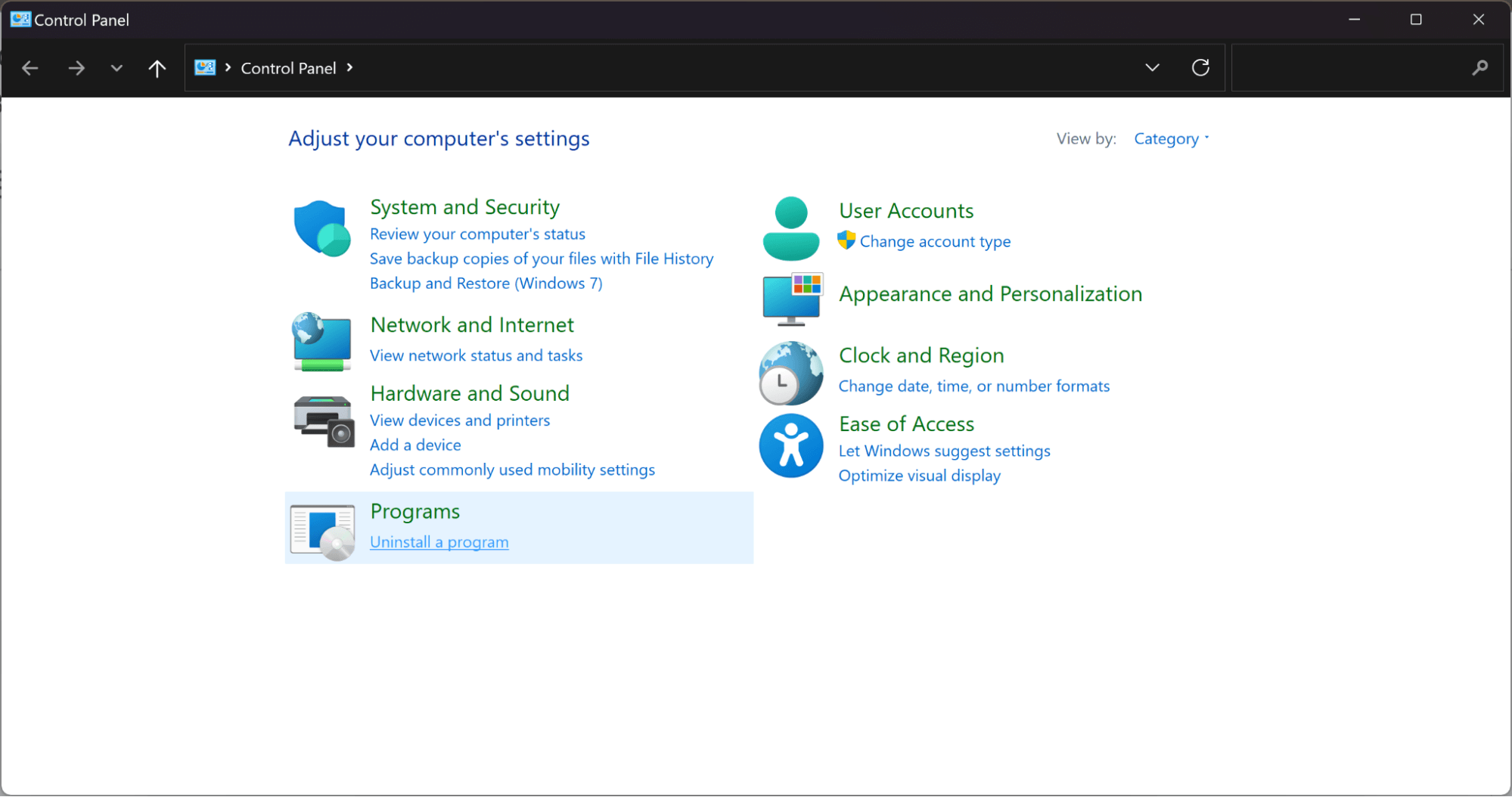
Ia kemudian menunjukkan senarai atur cara yang boleh anda nyahpasang. Klik kanan pada yang anda mahu dan pilih Nyahpasang.
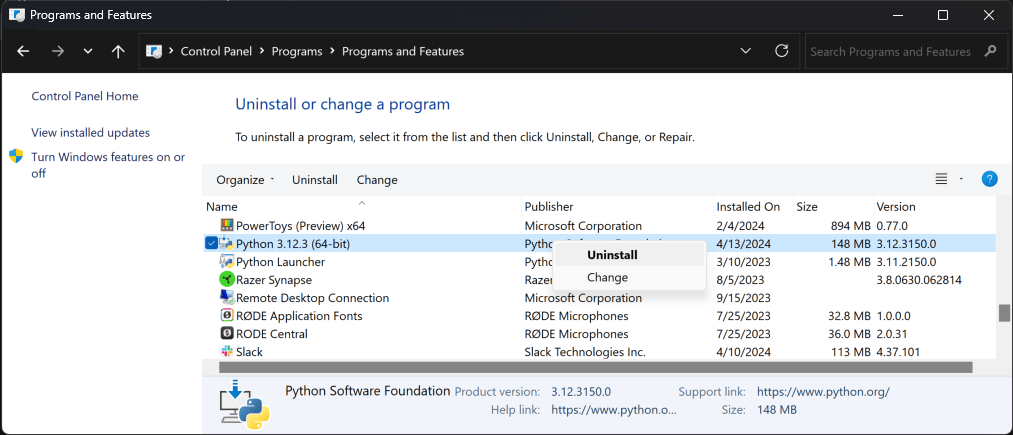
Tiada pengesahan diperlukan. Ia telah hilang!
The above is the detailed content of How to install Python: The complete Python programmer's guide. For more information, please follow other related articles on the PHP Chinese website!











































![[Web front-end] Node.js quick start](https://img.php.cn/upload/course/000/000/067/662b5d34ba7c0227.png)



